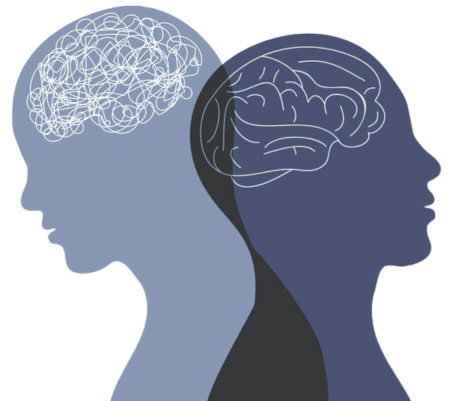
Misconceptions surrounding aging—especially what it means for one’s cognitive abilities—are deeply ingrained in our society. These myths include false beliefs that cognitive decline and dementia are inevitable parts of growing older. However, the truth about cognitive changes in aging is far more nuanced—and far more hopeful—than many people realize. While certain aspects of cognition may deteriorate with age, others remain stable or even improve, challenging the stereotype that normal aging is always synonymous with mental decline. By separating misconceptions from reality, we can better understand how to nurture cognitive health and embrace the full potential of our later years.
The human brain is remarkably complex, and as we age, it naturally undergoes structural changes. The brain begins to shrink in our 30s and 40s, and the rate of shrinkage accelerates after age 60. This decrease in the volume of gray and white matter, which are distinct types of tissue in the brain, along with the size and number of neurons, can impact cognitive functions. Additionally, changes in blood flow can slow certain brain functions, which can contribute to a reduction in our processing speed. It’s important to note that these changes do not equate to a loss of intelligence. Rather, all they mean is that older individuals may take longer to process and respond to information. This nuance is critical in understanding how cognitive abilities adapt with age rather than diminish outright.
Perception, the ability to recognize and interpret stimuli, also evolves as we age. Sensory systems, such as vision and hearing, play a significant role in gathering information and forming thoughts. Age-related changes in these senses can alter perception, making it more challenging for older adults to process stimuli. For example, someone with diminished hearing and vision may struggle more to perceive and interpret their environment. Additionally, attention, or the ability to focus on a stimulus, changes in nuanced ways with age. While older adults typically maintain strong sustained attention—focusing on a task for an extended period—selective and divided attention often decline. This means tasks like concentrating on one conversation in a noisy environment or multitasking, respectively, can become more difficult as one ages.
One of the most persistent myths about aging is that memory inevitably deteriorates. The reality is more nuanced than this. Long-term memory—the ability to recall events or information from the past—generally remains intact during normal aging. However, short-term memory, which involves holding and using information for immediate tasks, may decline. Short-term memory typically declines before long-term memory due to its temporary nature and dependence on specific brain regions, primarily the hippocampus. In contrast, long-term memory is more resilient because it is distributed across multiple areas of the brain and strengthened through repeated retrieval and reinforcement. Older adults facing minor challenges with their memory associated with normal aging may find it helpful to rely on environmental cues or memory aids to navigate these changes.
While some mild changes in cognition are considered a normal part of the aging process, developing dementia is absolutely not. One way to differentiate between normal aging and neurodegenerative conditions, such as dementia, is by evaluating one’s ability to perform executive functions. Executive functions, such as decision-making, time management, and self-control, rely on basic cognitive skills like perception, attention, and memory. These higher-level functions typically remain relatively stable or only experience a mild decline in normal aging. However, significant disruptions in executive functions, such as getting lost in familiar places or forgetting conversations, may be indicative of a condition like dementia, and should be evaluated by a healthcare provider. Additionally, while mild cognitive impairment, marked by either memory loss or a decline in cognitive functions, occurs in almost 20% of adults over the age of 65, fewer than half of the individuals with mild cognitive impairment go on to develop dementia. This goes to show that cognitive impairment is not synonymous with dementia nor does it always occur in normal aging.
Aging is not solely about decline—many cognitive abilities, including knowledge and learned skills, remain stable or even improve with age. Knowledge and skills that were learned in the past are usually maintained, and are further built upon to be greater. For instance, one’s vocabulary often grows richer as one ages. Older adults are also very capable of learning new things, albeit at a slower pace than in their younger years.
While some cognitive changes are influenced by genetics and the environment, lifestyle factors play a significant role in maintaining cognitive health. Physical inactivity, social isolation, poor diet, substance use, smoking, and unmanaged medical conditions can all contribute to cognitive decline. To promote cognitive health, individuals should engage in activities that stimulate the mind, such as learning new skills, maintaining social connections, participating in hobbies, and playing games. Staying active, eating a balanced diet, and managing chronic health conditions are also vital strategies for maintaining a healthy mind.
Aging does bring changes to cognitive function, but these alterations are far from the doom-and-gloom narrative often portrayed in the media. By understanding the reality of cognitive aging, separating it from misconceptions, and adopting a proactive approach to brain health, we can embrace aging as a time of growth, learning, and resilience.
Sources:
